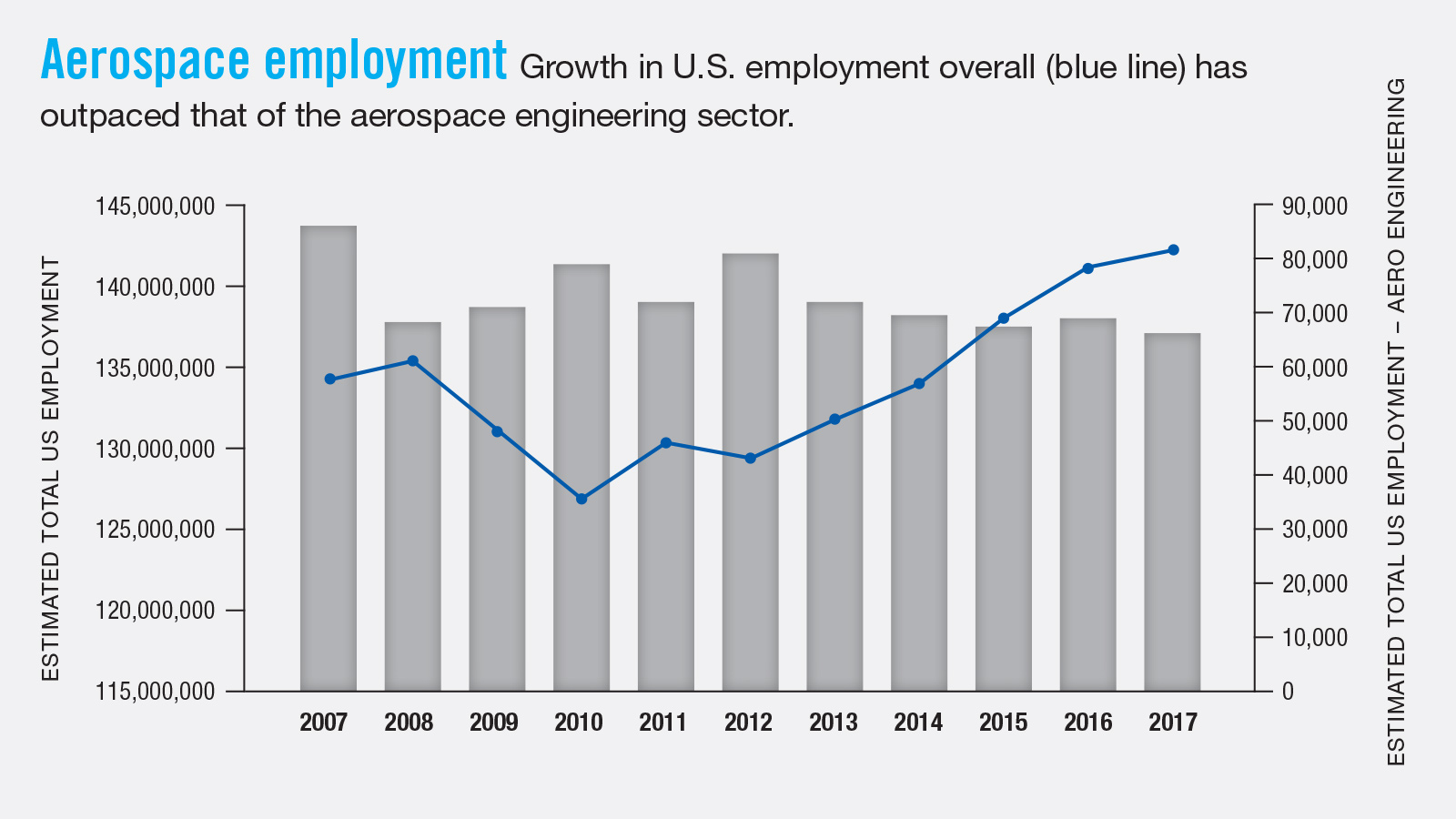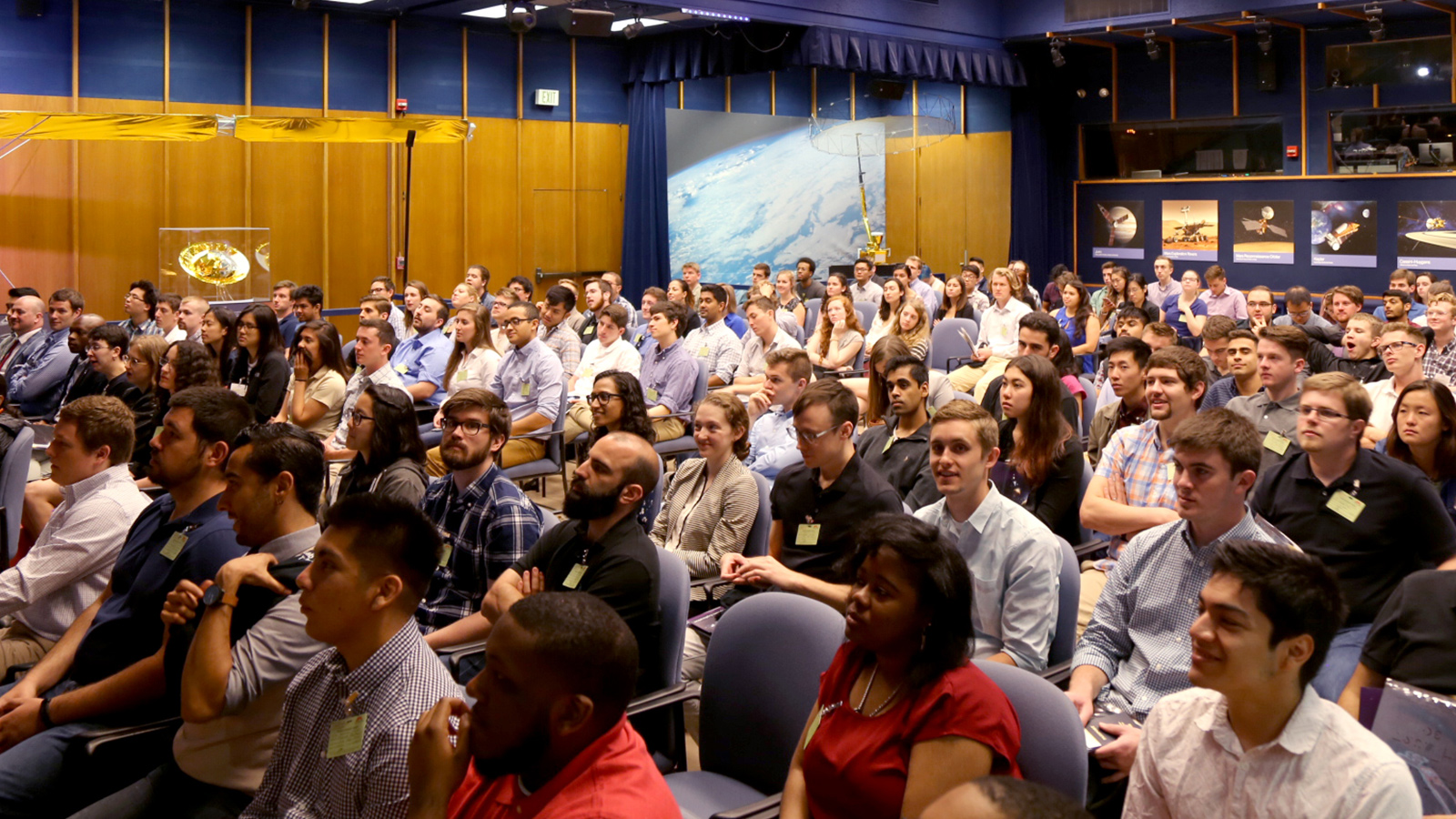Stay Up to Date
Submit your email address to receive the latest industry and Aerospace America news.
Veteran aerospace engineers in the U.S. are retiring, and employment data shows that the workforce is contracting. The U.S. remains the global leader in aerospace goods and services, and yet the numbers are concerning. Aerospace expert Amir S. Gohardani researched the workforce problem and offers some advice for how corporations and policymakers should address it.
Last year, the U.S. aerospace industry led the world in exports of aerospace goods and services to the tune of $143 billion, a figure that amounted to 34 percent of such exports around the world, according to the Commerce Department.
Despite its enormous impact and still stellar performance, the U.S. aerospace workforce now finds itself at a crossroads. The workforce has two options: Either continue with incremental advances or adopt a bolder approach involving radical changes.
When the puzzle box of aerospace workforce challenges is opened, I see four categories of issues: an aging workforce, global competition, new industry practices and leadership. These challenges, which also can be seen as opportunities, arise from a compilation of factors.
An aging workforce
The pending retirement of a significant portion of this workforce is notable, as this group inevitably must be replaced by less-experienced professionals. Leaders in government and industry must decide how to bridge this gap between profoundly experienced aerospace workers and less experienced ones, and embed those decisions into their strategic plans.
Global competition
On balance, the now-global competition among aerospace companies is a positive development, because it boosts creation of state-of-the-art solutions and advances the industry as a whole. However, today’s fiercer competition means that U.S. companies must adapt if they are to retain their competitive edge. Elements beyond technology such as brand, work culture, customer experience, program management and program execution play a role in the ability to capture as much market share as possible. But there is a role for U.S. government agencies too.
Those agencies should continue to strive to facilitate unprecedented technical solutions with the objective of leading the global aerospace sector. In many ways, this would be a continuation of previous success stories. DARPA, for example, paved the path to the modern internet and helped inspire miniaturization of GPS devices. These were instances of research objectives leading indirectly to societal benefits. Still, more often than not, research programs under the government umbrella need continuous optimization in terms of program initiation, planning, execution, monitoring and control, and program closure.
A more complete overview of limitations and opportunities surfaces by recognizing the shared mechanisms of competition and its protocols. The U.S. aerospace industry is bound by ITAR (the International Traffic in Arms Regulations) and the Export Administration Regulations. They restrict the export of most defense-related technologies in the name of protecting U.S. national security. ITAR, in particular, limits the dissemination of knowledge about those technologies to “U.S. persons.” This means the U.S. cannot rely on recruiting a nondomestic workforce to work with ITAR-related technologies. A highly skilled aerospace workforce must be maintained domestically, but that is challenging because of today’s aging workforce.
Corporations and government agencies should adapt to this reality by undertaking a transitional phase in which senior personnel share their knowledge with less-experienced and typically younger workers in order to safeguard gems of knowledge and preserve the workforce’s culture. Also, whenever possible, nonproprietary knowledge should be shared across the aerospace sector to fuse lessons learned with newly available tools of the digital age.
New industry practices
Building on domestic aerospace traditions will be essential. Those in charge of creating new industry practices and standards should always review precedents in different categories, such as functionality, safety, quality control and assurance. I’ve heard it argued that new technologies and industry practices diminish the importance of looking for precedent from those who developed aerospace systems in earlier days, for example, through wind tunnel testing and flight testing. I disagree. Computational fluid dynamics and additive manufacturing techniques have led to new waves of progress within the aerospace industry, but one cannot solely rely on such tools. Indeed, new industry practices can substantially benefit from the experiences of human beings. A compilation of these findings could then be translated into machine learning approaches. Generally, exclusion of human beings entirely to rely on machines and advances in robotics and artificial intelligence is not the best option. Despite mind-blowing advances in the aerospace sector, human presence in developing aerospace technologies is essential, since humans will be affected by these advances to a smaller or larger extent.
Leadership
A robust and efficient leadership scheme is another key ingredient for preparing the U.S. aerospace workforce for the challenges ahead.
The results were illuminating when my colleagues at the Springs of Dreams Corp., a nonprofit educational organization I co-founded, analyzed employment statistics from the U.S. Labor Department. Aerospace engineering employment has decreased as a percentage of the total U.S. workforce, despite an overall increase in the hourly and mean annual wage of the aerospace engineering workforce.
This trend should be alarming to the aerospace sector. The decreasing size of the U.S. aerospace workforce means that the pool of potential aerospace engineering leaders will be limited. Moreover, the U.S. population continues to increase, and yet individuals are turning away from the aerospace sector despite an increase in salaries. It might be argued that engineers educated in other majors, such as electrical engineering and mechanical engineering, work in the aerospace sector and that, therefore, this decrease is acceptable. This argument misses the point that aerospace engineering as a major should be exhilarating enough to attract students who will one day join the profession.
There are many qualities that could prove to be beneficial to a leader of the future aerospace workforce. By adopting a polymathic approach to engineering, a future leader can value a diverse set of skills and new ways of thinking. Challenging the status quo, such a leader would be able to inject early innovation practices and utilize the diversity of U.S. aerospace workers to advance the industry and the workforce. More than often, an existing chasm between academia and industry is due to a lack of communication regarding the multidisciplinary fusion of technology, business development and management. The U.S. aerospace workforce is in dire need of prominent leaders.
In my January interview with Clayton Daniel Mote Jr., president of the National Academy of Engineering, he explained the role of a leader like this:
“Without a vision, you cannot be much of a leader. You essentially become a manager. Managers essentially run the store. They make the trains run on time. Leaders tell you where the train is going to go. And, how far and so on. So, the leader’s job is really the vision piece. Most of the time. Unless the organization does not want a leader. It just wants a manager. That is another leadership question. So, the organization that only wants a manager is happy with a manager.”
In order to reach unexplored frontiers in our galaxy and advance science, technology and society, the U.S. aerospace workforce needs visionaries who through an insightful understanding of leadership and the culture of an organization can tailor their leadership style to the cultural needs of the workforce.
Amir S. Gohardani
is an AIAA associate fellow and the chair of the institute’s Society and Aerospace Technology Integration and Outreach Committee. He is a past chair of the AIAA Orange County section in California; president of the nonprofit educational organization Springs of Dreams Corp.; and has a doctorate in aerospace engineering from Cranfield University in the United Kingdom and Master of Science degrees in aeronautical, mechanical and aerospace engineering, and a Bachelor of Science degree in vehicle engineering.
Related Posts
Stay Up to Date
Submit your email address to receive the latest industry and Aerospace America news.






